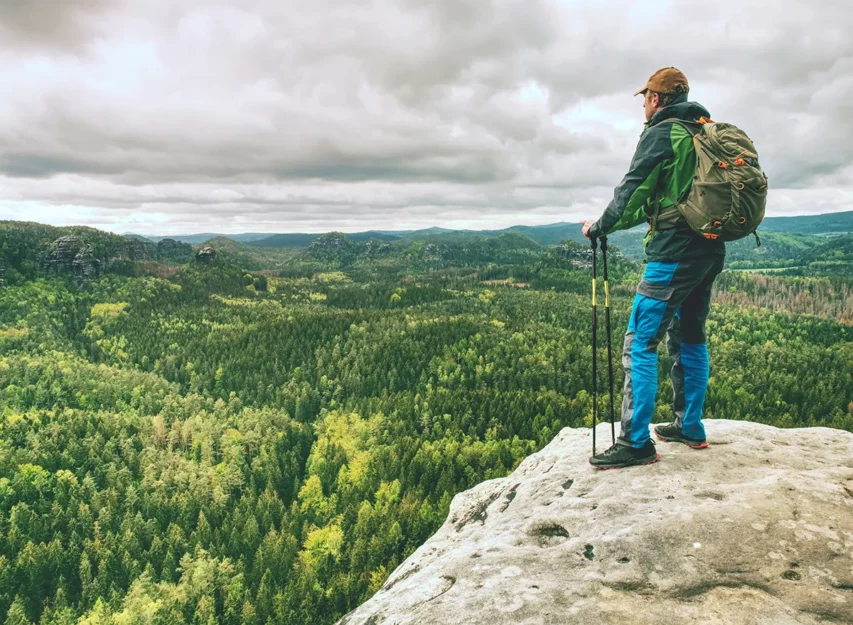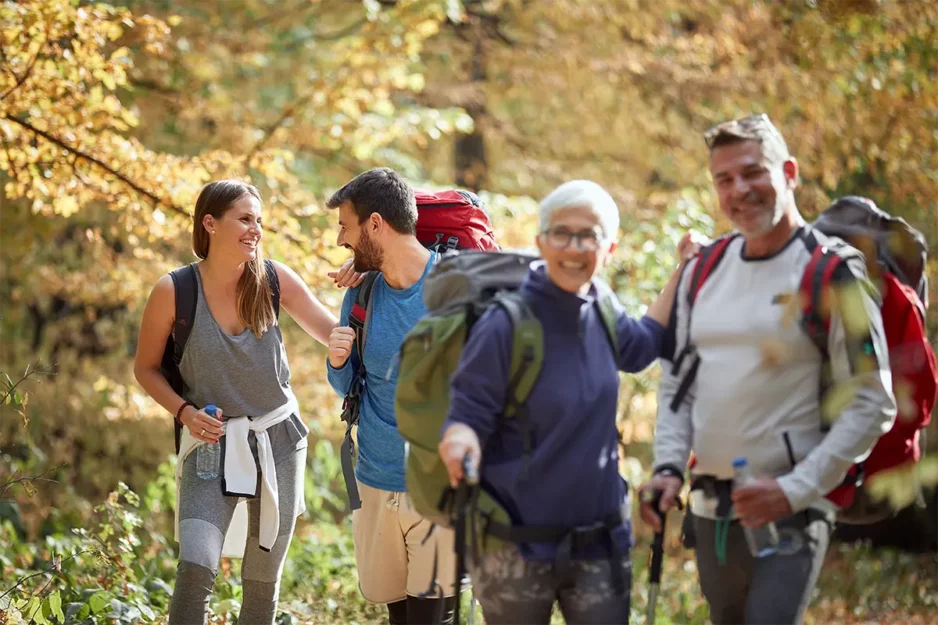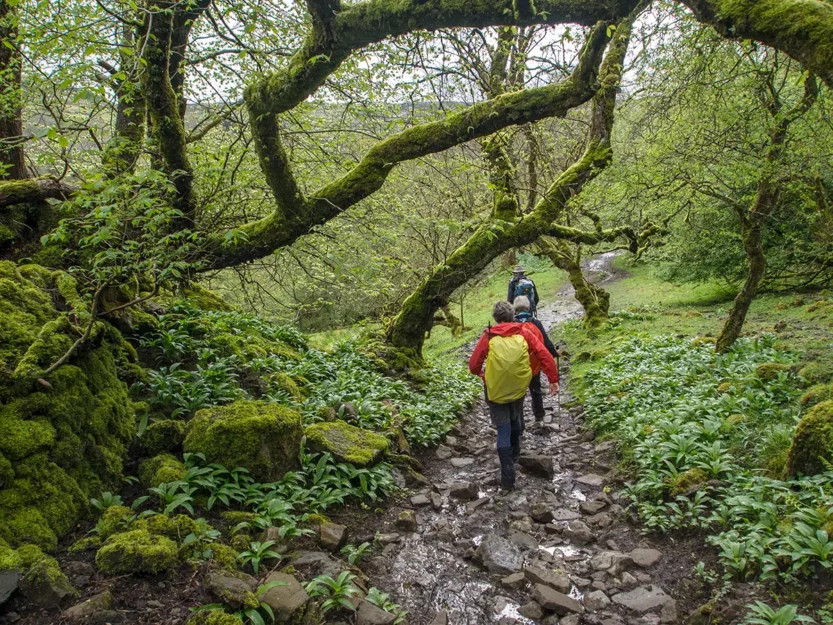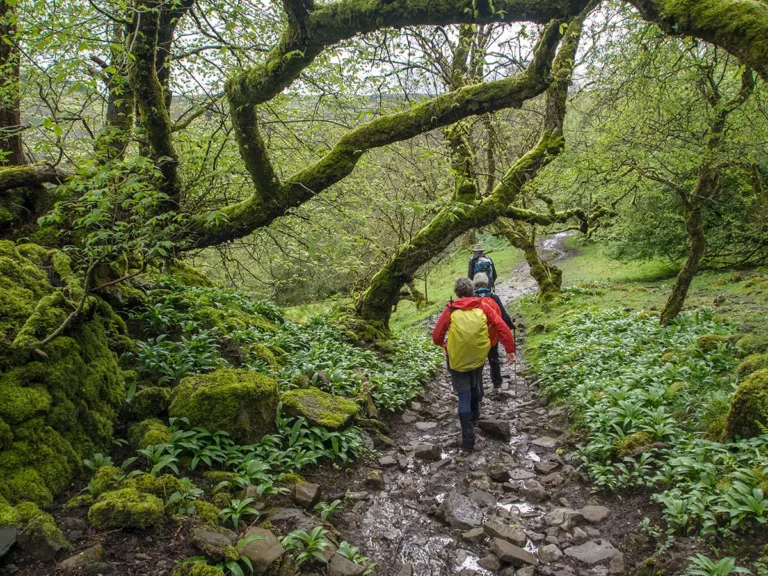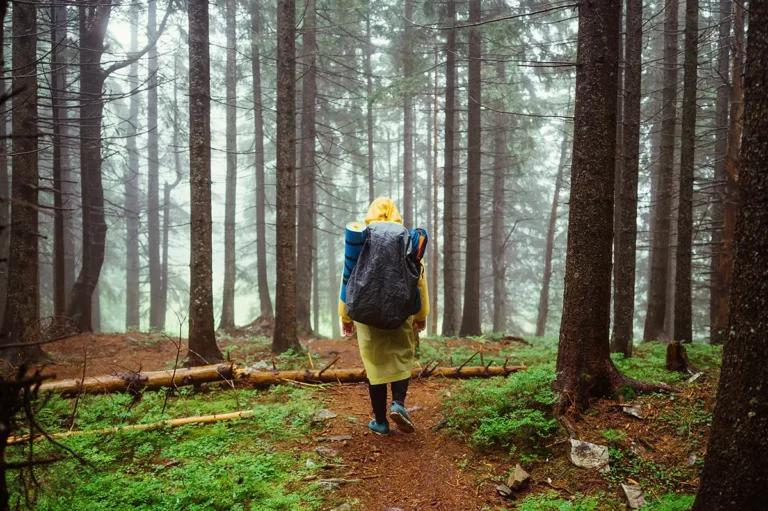If you’re concerned that your quads will burst out of your jeans after a few hikes or you’re looking for alternatives to the gym to bulk up, building muscles from hiking is not that easy.
I started weightlifting during my freshman year in High School. It wasn’t until my Junior year that I realized my progress wasn’t where it should be. Since I couldn’t rely on the internet for answers in the mid-90s, I started talking to the bodybuilders at the gym.
They all had one piece of advice: Eat more.
Whenever I hear, “I don’t lift weights because I don’t want to get big and bulky,” I chuckle and think back to a 17-year-old me eating chicken breast before bed and lifting heavy weights six days a week. Building larger muscles takes hard work and a strict diet.
So, does hiking build muscle? Hiking certainly strengthens muscles, and with continuous variability of training and a high protein diet, you can also develop larger muscles from hiking.
This article details which muscles get worked the most on hikes and workouts that, coupled with diet, build muscle on the trail.

Does hiking build muscles?
For muscles to develop, they require enough tension and stress to create microtears in the muscles, which the body sends nutrients to repair.
With each repair, muscles develop stronger and build muscle mass with a proper diet.
How does hiking build muscle?
Every step on a hiking trail demands more use of muscles than walking on a sidewalk.
When reading that, it’s easy to envision climbing steep trails while taking lunging steps over boulders. But just walking along any uneven path pushes muscles to work harder and stronger.
The Journal of Experimental Biology tested this by having participants walk along a treadmill with and without padded squares adding unevenness. The results found a significant increase in leg muscle activity.
Measuring the activation levels with electromyography — electrical activity of skeletal muscles — activity levels in the thigh muscles increased between 47 to 60 percent, while the lower leg increased by 28%. Calf muscles saw the lowest increase, with a still impressive 17 percent.
And that’s on a treadmill. A winding dirt trail elevating you up a mountainside is far more challenging, working your muscles harder.
Which muscles does hiking work?
The easiest of trails still ascend and descend across uneven terrain. As your hiking skills increase, a more challenging trail will feature thousands of feet in elevation change across many grueling miles and switchbacks.
Since uphill, downhill, and rough terrain all work your lower body in unique ways, here’s a breakdown of each.
Muscles worked when hiking uphill
The muscles in the back of your leg are responsible for driving you up steep trails while stabilizing your body against the gravity pulling you back.
Hamstrings
The hamstrings are the primary muscles in the back of the thigh. This muscle group allows us to stand from a sitting position, propel forward, jump, squat, and run.
Calves
As elevation grade increases, calves work overtime to support and drive your weight up a hill. Powering yourself up an incline is similar to completing calf raises, one of the most effective resistance exercises for activating the calf muscles.
Glutes
The glutes make up the buttocks’ muscle group and help support and stabilize the body at the hips while driving the body forward. The glutes are activated along every step, including downhill and across flat, uneven terrain.
Muscles worked hiking downhill
Downhill seems easy, but slowing and stopping your body when descending puts immense stress on your muscles, especially the quadriceps.
Quadriceps are a hip flexor and knee extensor that make up the muscle group that forms the front and outside of the thigh. These leg groups are worked when performing squats, leg presses, lunges, and step-ups.
Muscles worked navigating rugged trails
Sidestepping rocks and zigzagging rugged trails require the hips to open. This hip range of motion is led by the abductor muscles, which include:
- Gluteus medius
- Gluteus minimus
- Tensor fascia latae
Secondary hip abductor muscles are the gluteus maximus and iliotibial band.
Lower back use on hikes
The lower back acts as an anchor for your entire body. It stabilizes your core so you can bend, stretch, and lean. The power of your legs and support of the hips and buttocks would be meaningless without the lower back.
This is especially true on hiking trails while fighting gravity on hills, often with a heavy backpack.
Hiking up and downhill changes the spine’s range of motion and positioning drastically, forcing the supportive lower back muscles to work harder.

How to build muscles hiking
Building muscles is still a reality if you want to trade a gym membership for the trails. Although hiking is primarily an aerobic exercise, not anaerobic, you can achieve hypertrophy and grow muscle size by introducing high-intensity interval training (HIIT).
In a study by the International Journal of Exercise Science, runners were introduced to HIIT training three days a week for ten weeks. Through intervals of 4 minutes running at 90 to 95 percent max heart rate followed by 3 minutes of rest, the subjects using HIIT grew the size of their quadriceps by 10 percent on average.
It’s important to note the subjects were active, healthy university students that don’t consistently train for strength or conditioning. Active training participants likely wouldn’t have seen a similar increase without adding intensity and following a strict diet.
Since diet is a much more comprehensive topic, here’s an article from Muscle & Fitness on nutrition and muscle building.
HIIT hiking exercises
You can introduce HIIT to your hike in several ways. Hill climbs are a classic HIIT workout you can quickly introduce into your hikes. The fitness and health website Active.com recommends starting with a slight gradient to sprint up at 80 percent of your max effort. This is repeated for 5 to 8 sets.
Following the HIIT study above, trail running sprints will further build muscle along a rugged trail. Running for 4 minutes close to max heart rate with 3-minute rests of light walks or rest.
Adding a weight vest to hikes
If hiking isn’t challenging enough, wearing a weight vest will undoubtedly take it to the next level. With a weight vest, your legs are forced to carry more weight than they’re accustomed to, adding more stress with each step.
Weighted vests add variability to your exercises, challenging your muscles and training them to work easier when not wearing a vest. This in turn, improves endurance and strength.
Final thoughts
Hiking alone won’t build large muscles, but it does strengthen and condition muscles. Adding HIIT exercises to a hike and following a proper diet can build larger leg muscles.
As a weightlifter and hiker, I like to separate the two. Hiking, for me, is a way to unplug, enjoy nature, and reap the mental benefits of nature.
Spending time in nature has been shown to positively impact depression, stress, and anxiety while improving memory and well-being.
Combining a workout with a hike is perfectly fine, but for city dwellers, a casual stroll in the great outdoors can significantly benefit your mind and body.
Did this article answer how does hiking build muscles for you? Share it on social media to help new hikers with the same questions.


